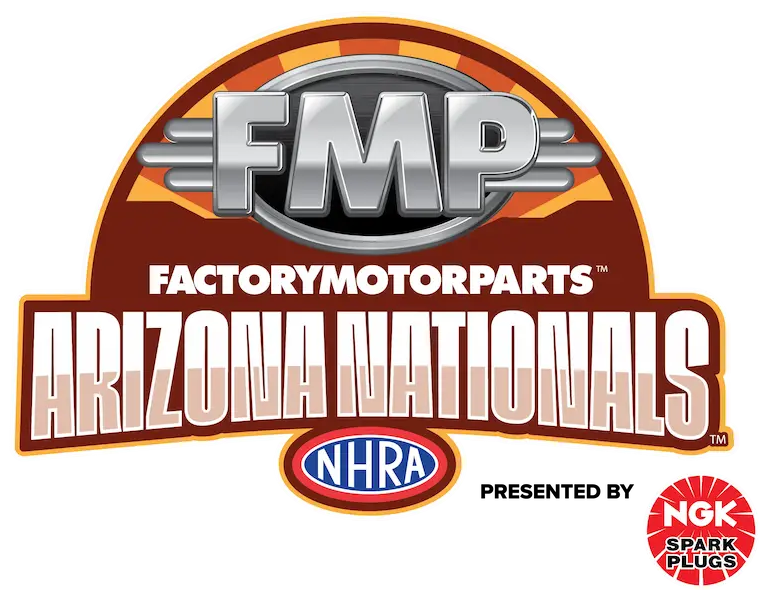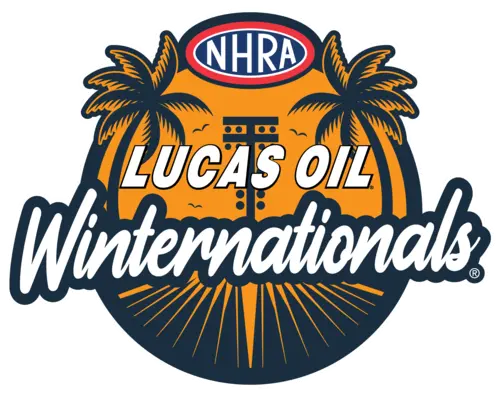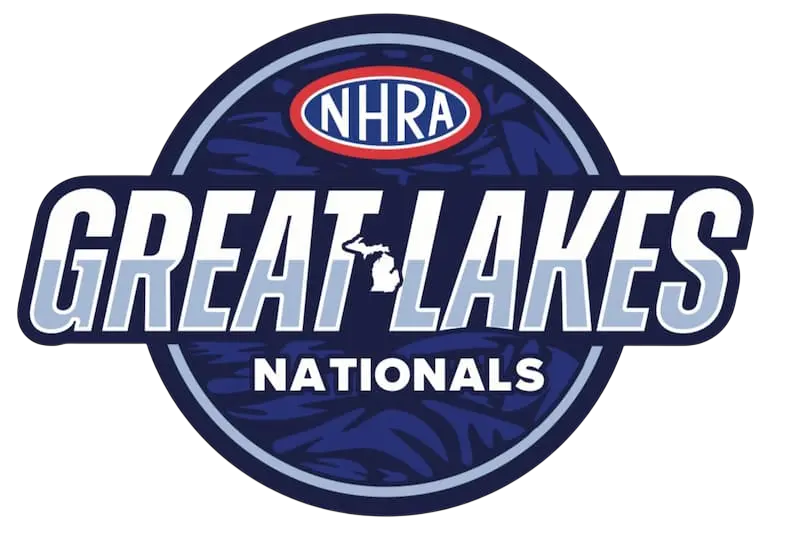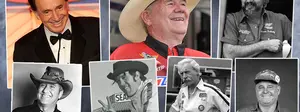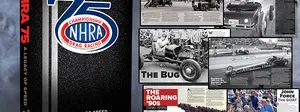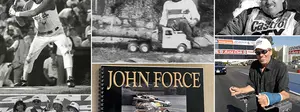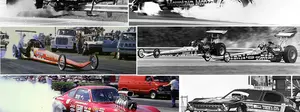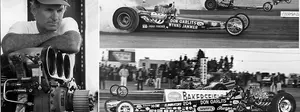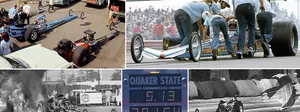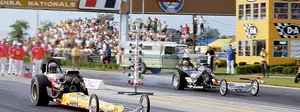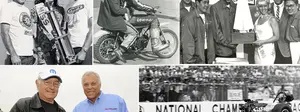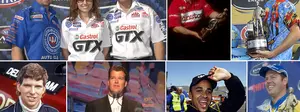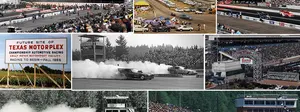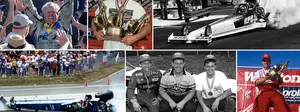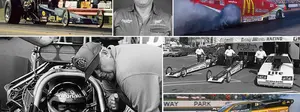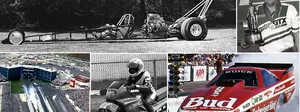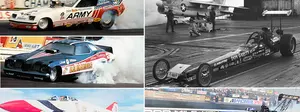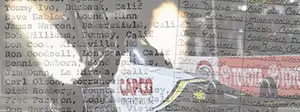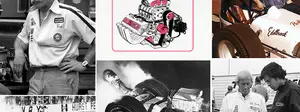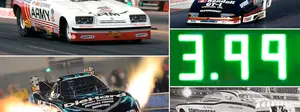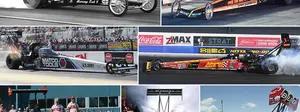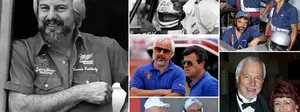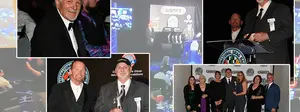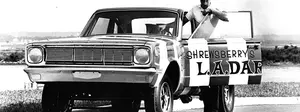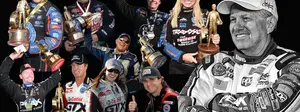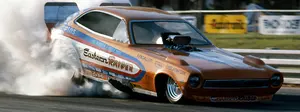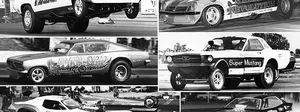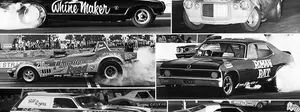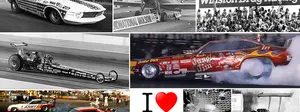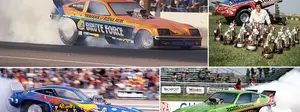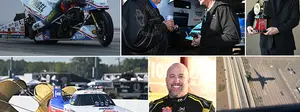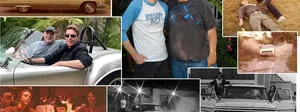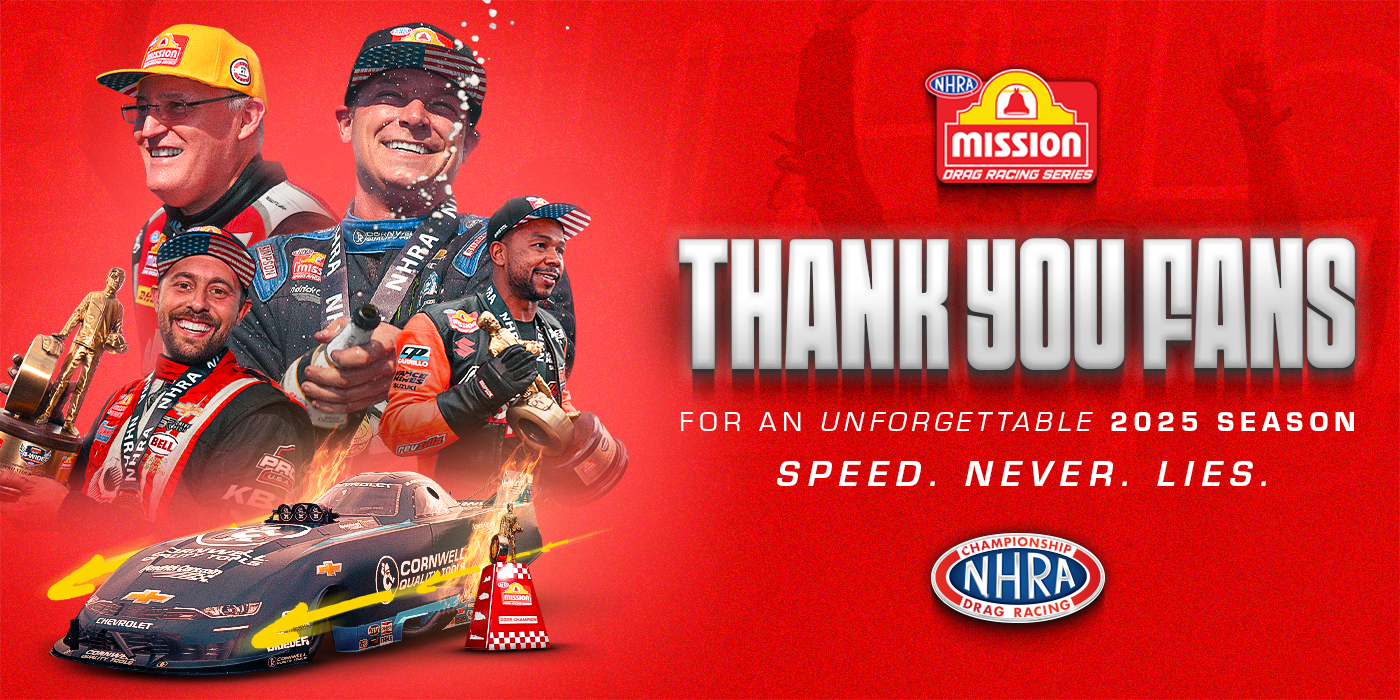

California Chargers: The Keeling & Clayton story
 |
 |
You probably can’t call yourself a true fan of Top Fuel’s history if you don’t still salivate over the beautiful Keeling & Clayton Top Fuelers of the early 1970s. The original slingshot and the later rear-engine car were rolling works of art; with their classic blue-on-blue paint scheme, sparkling chrome, and crisp bodywork, they were everything that a Top Fueler ought to be.
A lot of people are familiar with the basic history of the team, which was fielded by John Keeling and Jerry Clayton. Driver Rick Ramsey brought them their first fame when he won the 1970 Supernationals at Ontario Motor Speedway in the slingshot, and John Stewart put the rear-engine car into the Cragar Five-Second Club two years later at OMS. The team later transitioned into Funny Cars that ran hard and looked good until the team disbanded in 1977.
And now, the story behind the story, as related to me by Clayton for a story I did on the car recently on NationalDragster.net that deserved more room than I had there.
Despite the California Charger name they eventually adopted when they moved to the Golden State, Keeling and Clayton both hailed from Illinois, where they first met in the early 1960s. They wouldn’t partner for another decade after both fortuitously moved west to follow their jobs, which both were in the airline industry. Clayton was a ground mechanic at Chicago’s O’Hare airport for United Airlines (maintaining all of the equipment except the planes) in 1961 when he first met Keeling, who was working on a car at the shop of magneto maestro Len Hughes and hung out at the same Sunoco gas station around the corner from Clayton’s apartment. Not long after that, Keeling also took a job at O’Hare as a ground mechanic, working for TWA.

The first California Charger was this car, with John Keeling, Chuck Johnson, and Leonard Van Louven, with driver Norm Wilcox. The extravagant rear bodywork and magnificent paint job came later. (Tom West photo)
|
Thanks to their jobs in the airline industry, both got to visit California and became tight with Leonard Van Louven, who worked for Isky and later Donovan, but the duo never got a chance to team up on a race car because Clayton got drafted into the army, so Keeling became partners with Dale Lepke on a car named The Intruder. After Clayton got out of the service, because he was too late to be involved with Keeling, he took up flying as a hobby while renting a room from Keeling’s mother, where all three lived together. Although he was qualified to fly, United wouldn’t give Clayton that chance in his current position, so he quit his maintenance job in September of 1968 — giving up nine years of seniority — and got himself rehired with the airline and got enrolled in the net new-pilot’s class.
While Clayton was earning his wings in Washington, D.C., Keeling got transferred to Los Angeles (LAX), where he built the first California Charger with Chuck Johnson, a Vietnam vet who had lost both legs below the knee. Norm Wilcox was their driver.
Fortuitously, Clayton also got transferred to L.A. in late 1969, just as Johnson had decided to get married and get out of racing. Clayton bought his half of the team for $2,000 just after the 1970 March Meet. Wilcox left soon thereafter to continue driving in Top Gas for Steve Levy, and 1969 world champ Steve Carbone, who was between rides between leaving Larry Huff’s Soapy Sales team and waiting for his new car to come out of Woody Gilmore’s shop, took over the wheel. Carbone drove for a few races but, more importantly, introduced the duo to Ramsey, “a long-haired, beach hippy-type who was afraid to meet me until after he had his hair cut,” Clayton remembered fondly. “At the time, as a low-seniority pilot on probation, my hair wasn't very long.”

Keeling, left, stands with the car at Ontario Motor Speedway; this shot and the one below shows off the car's distinctive rear bodywork.
|

Rick Ramsey (below) drove the beautiful car to its only national event win at the 1971 Supernationals (above), where he defeated Gerry Glenn in the final. A large version of this photo hung for years in the executive conference room at NHRA's headquarters in North Hollywood, Calif.
|
 |
The front-engine car already had set the bar high on looks with a custom injector scoop and swoopy bodywork by Ken Ellis that ended with a hidden parachute pack, but Clayton’s rapidly rising pilot’s salary brought an infusion of cash that allowed them to start adding even more chromed parts and a beautiful nose by master metalsmith Tom Hanna. George Cerny repainted the car into its now familiar colors; Nat Quick was supposed to do the lettering but couldn’t make it (“guess the long-haired guys were all afraid of me,” Clayton quipped), so Kenny Youngblood, who was just beginning to make a name for himself, stepped in and did a great job.
The dragster won Best Appearing Car honors at the 1970 Supernationals and went on to win the event at which, ironically, they weren’t initially eligible to compete. Because Ramsey was new to the team, he didn’t have enough points to be invited to the Supernationals, but when one East Coast racer couldn’t make it, Division 7 Director Bernie Partridge went looking for a local substitute but insisted on a full-bodied car as opposed to a short-bodied, open-chassis “rail job.” The California Charger fit that bill nicely. They qualified on just one pass and went on to win the race, besting Gerry Glenn in the final.
The team was runner-up to Don Garlits early the next year at the March Meet and at the PDA (Professional Dragster Association) event at Orange County Int’l Raceway, where they famously defeated Don “the Snake” Prudhomme, who was driving his Hot Wheels wedge, on a holeshot in the semifinals in which both ran a 6.41 in what then was the quickest side-by-side race in Top Fuel history. Ramsey set the national record in the car in June of that year, running a 6.51 in Fremont, Calif., to better the 6.53 established the previous October by Tom Raley. The mark stood until Garlits bettered it in September.
“Ramsey would let people leave on him because about a third of the people we raced would red-light against us, so we could take it easy on that round,” Clayton recalled. “We didn’t rebuild the engine every round like they do now, and with a 32-car field, you needed one free round to get through it.”
Their success at the Supernationals brought in additional funding — primarily from the Lee Eliminators group — and allowed them to also field a Funny Car, a Pinto that Ramsey also drove, though they had to share their one engine between both cars, which hindered Ramsey’s success in the Pinto. “We were trying to put the power we made in the dragster to the ground in the Funny, and it wasn't going so well,” Clayton acknowledged.
A number of drivers followed Ramsey into the cockpit of the team’s Funny Cars, including Tom Ferarro, Dale Pulde (who filled in after the late Mike Snively, who had agreed to drive the car for the team but was a no-show for their first race; they later found out that he had committed suicide), Jake Johnston, Pat Foster, and, finally, Neil Leffler, who drove the team’s last car, a ’77 Trans Am that Cruz Pedregon recently re-created as a Nostalgia Funny Car. Like the dragsters, the Funny Cars were rolling showpieces, all painted in the familiar light-blue/dark-blue scheme.
 |

Jake Johnston, second from left, drove the Keeling & Clayton machine to victory at the 1973 Professional Dragster Association meet at OCIR and received congratulations from the PDA's Doug Kruse. Keeling is far left; Clayton is second from right.
|
In the meantime, Keeling & Clayton had joined the rest of the Top Fuel crowd in moving to a rear-engine car — another beauty, painted the same and equipped with front-wheel pants. Ramsey initially drove the car before turning it over to Johnston, who drove the dragster to victory at the 1973 PDA event at Orange County Int’l Raceway. That victory, much like their Supernationals title, didn’t come as easy as it sounds. Johnston was doing double duty in both the dragster and the Funny Car but lost in the first round in both.
“Jake was late in the dragster, ran low e.t. of the round, burned a piston, and got beat and went to run the Funny. They had changed the timing to kill off some bottom-end power and didn't get the slip-on wire back on the points, and as the car came to a bouncing stop after the burnout, the wire fell off, and the car lost fire — two cars, lots of pre-race publicity about one driver running two cars, and two first-round losses,” recalled an exasperated Clayton, who then set about trying to get the dragster back in the field via the break rule.
The rules at the time allowed a first-round loser to re-enter competition if a winning car could not continue. According to Clayton, in this case, first choice to fill in went to the car that had been beaten by the now-broken car; the next alternate was the low e.t. loser, which was the Keeling & Clayton car.
“The other car also had hurt their engine but were thrashing to get it patched up for the second round, and they insisted that they would make it,” he remembered. “They wanted to buy one of our older magnetos from us, and they were using it so they could race; I asked for the money for the mag or the mag, and they said they were broke and we could go back in. But by then, I didn't have time to replace the piston, so I went with the old-school fix: short out the plug, put a blank nozzle in that hole, and run it. From then on, Jake ran a perfect race. He left on the guy and won the round, and we went back to the pits to fix the engine — front wheels on tailgate, people so thick around the car we had a hard time getting around them — ran the other three rounds, and won the race.”
John Stewart made the car even more famous by becoming the ninth driver in the Cragar Five-Second Club with a 5.92 clocking at the 1973 Supernationals. Stewart, a teenage sensation from Southern California, got the seat in the car when Ramsey moved on. Stewart had accumulated enough points to attend the 1973 World Finals in Amarillo, Texas, so Keeling and Clayton hired him to drive there, at the Supernationals, and a few other races.

After their Supernationals win, the team also began to field Funny Cars, including this Pinto, which reached for the sky in Irwindale, Calif. (below).
|
 |
Dwight Hughes, who in a few months would become the 13th member of the Cragar Club in the Berry Bros. car, drove the California Charger at Ontario for a New Year’s Day race in 1974, but the dragster was parked soon after, and the team focused on Funny Cars through 1977, when Keeling and Clayton decided it was time to hang up the wrenches.
Clayton’s piloting workload grew ever more demanding as he flew larger and larger jets, culminating in a Boeing 777, and Keeling got married. The match race scene was beginning to dry up, some dragstrips were closing, and the duo decided it was time to call it a career. The legacy the two left, however, even in their short seven-year time span, won’t soon be forgotten.
Clayton also was proud of the innovations they brought to the sport. “Because we worked for the airlines, we saw a lot of neat technology that we tried to apply to our race cars, whether it was a lightweight part or even a new nut or bolt. The bolt that held our blower pulleys on was a 12-point bolt that no one had seen before. We were just itching for a place to put them on the car. We were exposed to this kind of stuff and had access to the equipment — at least what we could fit and take home in our lunch box,” he added with a laugh.
Keeling died of cancer in the mid-1990s. Clayton, now 71, began building Pro Stock and dirt-track engines, retired from flying in 1997, and remains an Illinois resident and proud of their accomplishments.
“That time was the highlight of my life,” said Clayton. “I’m very humbled that we’re fondly remembered. We were there such a short period of time compared to a lot of guys.”




